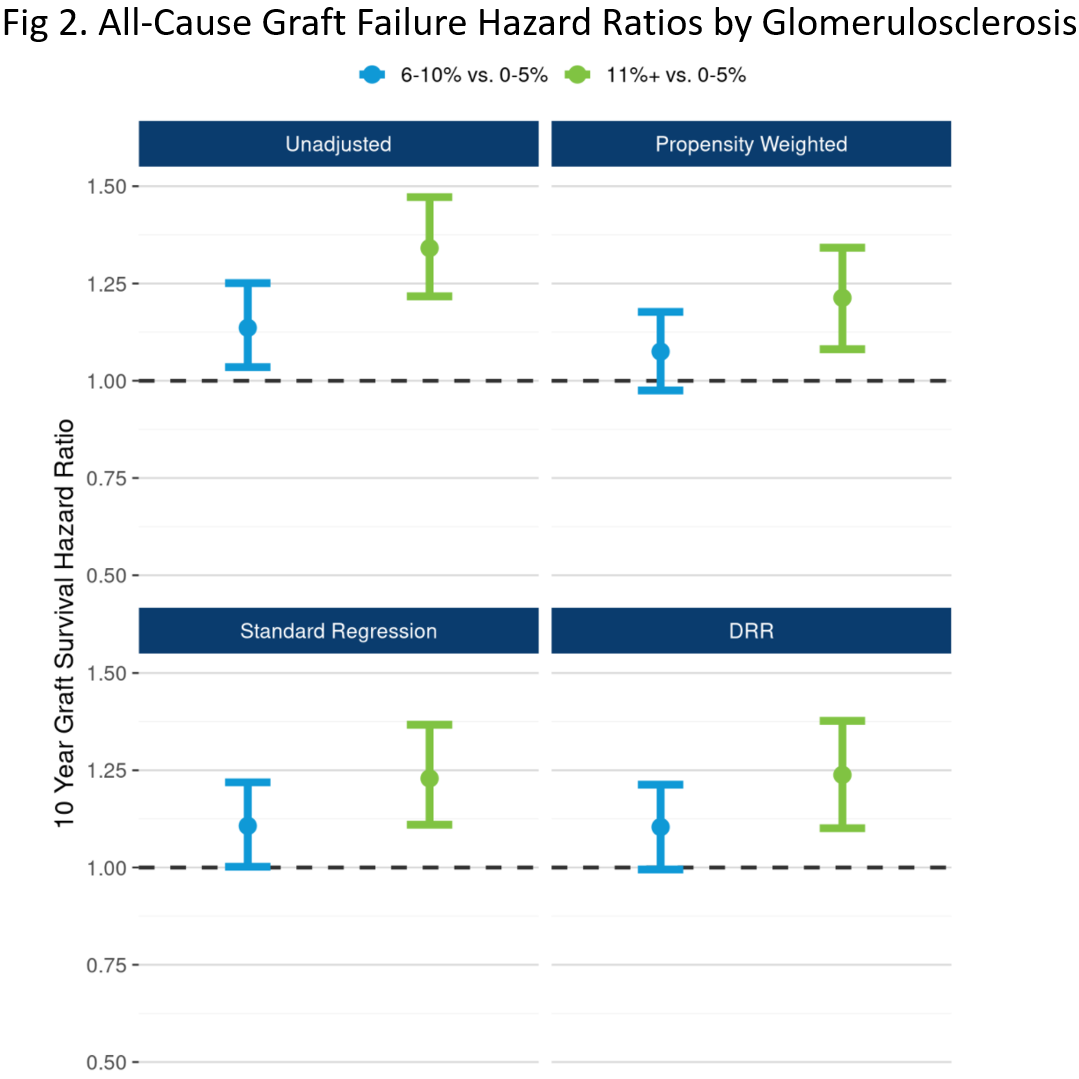Can Procurement Biopsy Data Tell Us Anything? The Influence of Glomerulosclerosis on Long-term Kidney Graft Survival
1United Network for Organ Sharing, Richmond, VA, 2Virginia Commonwealth University Health, Richmond, VA, 3Research, United Network for Organ Sharing, Richmond, VA
Meeting: 2021 American Transplant Congress
Abstract number: 402
Keywords: Donors, marginal, Graft acceptance, Graft survival, Kidney transplantation
Topic: Clinical Science » Kidney » Kidney Deceased Donor Selection
Session Information
Session Name: Kidney Deceased Donor Allocation 1
Session Type: Poster Video Chat
Date: Saturday, June 5, 2021
Session Time: 7:30pm-8:30pm
 Presentation Time: 8:10pm-8:20pm
Presentation Time: 8:10pm-8:20pm
Location: Virtual
*Purpose: Biopsy findings, particularly % glomerulosclerosis, have been shown to have a profound impact on kidney utilization decisions. Most studies of the association between procurement biopsy findings and kidney recipient outcomes have been limited in scale and focused on short-term survival. With a goal of aiding transplant decision-making, the “BARETO” (Biopsy, Anatomy, and Resistance Effects on Transplant Outcomes) national registry study unlocks previously trapped biopsy and anatomy data on DonorNet attachments to assess relationships between these findings and long-term renal graft outcomes.
*Methods: Data were manually entered for a preliminary cohort of 4,473 ECD donor solitary kidney transplants from 2008-2011. Kaplan-Meier graft (all-cause, death-censored) and recipient survival analysis out to 10 years was stratified by degree of glomeruloscerosis (GS). Causal inference was performed using propensity-weighted, multivariable, and doubly robust regression (DRR) Cox modeling to adjust for 18 potential confounders.
*Results: Survival analysis revealed an unequivocally significant (p<0.0001) association between GS and all-cause graft survival probability (Fig 1).
The graft failure hazard ratio for GS 11%+ vs. 0-5% (HR 1.34, 95% CI: 1.22, 1.47) was only moderately attenuated after DRR risk-adjustment (HR 1.24, 95% CI: 1.10, 1.38). (Fig 2)
Considered as a linear effect, the DRR risk-adjusted graft failure hazard ratio per each 5% rise in GS was 1.02 (0.99, 1.07).
*Conclusions: Despite questions about reliability and interpretation of procurement biopsies, GS as reported in DonorNet is highly associated with long-term graft outcomes. A dose-response relationship is evident, but further BARETO study data will help more precisely establish the nature of the effect beyond GS of 10%. Once established, incorporating GS as one component of a multifactorial composite donor score (e.g., KDRI) has the potential to improve organ offer decision-making and temper the impact of biopsy findings on the kidney discard rate.
To cite this abstract in AMA style:
Stewart D, Kamal L, Foutz J, McGehee H, Saravanane P, Yu S, Yousfi R, Gupta G. Can Procurement Biopsy Data Tell Us Anything? The Influence of Glomerulosclerosis on Long-term Kidney Graft Survival [abstract]. Am J Transplant. 2021; 21 (suppl 3). https://atcmeetingabstracts.com/abstract/can-procurement-biopsy-data-tell-us-anything-the-influence-of-glomerulosclerosis-on-long-term-kidney-graft-survival/. Accessed January 4, 2026.« Back to 2021 American Transplant Congress


